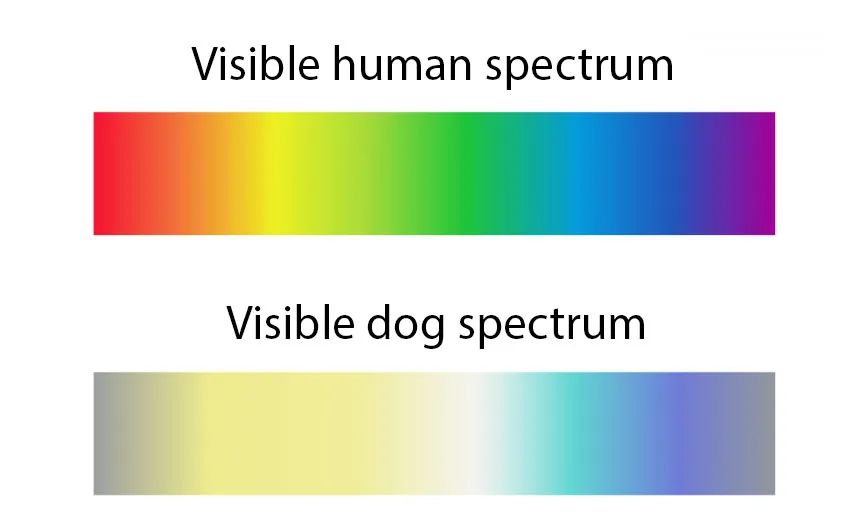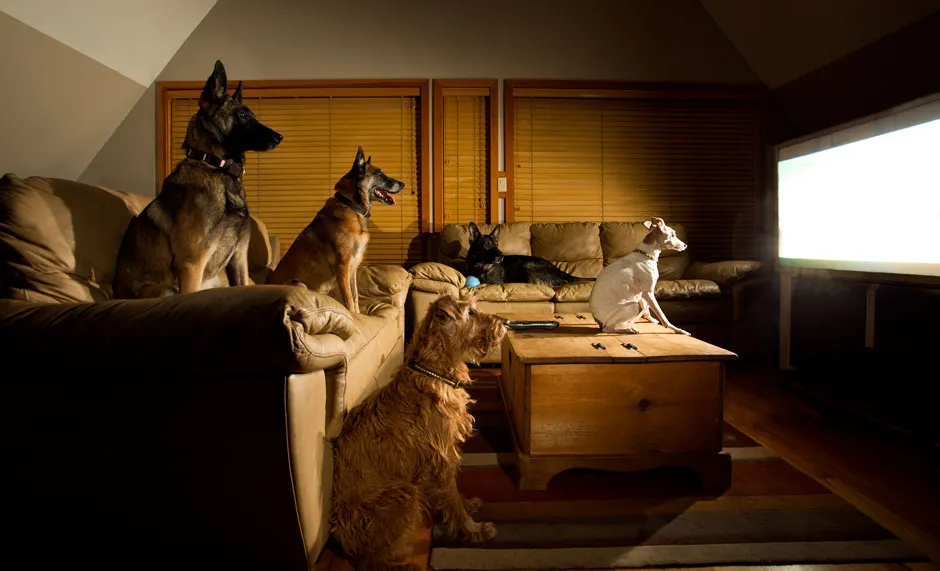Ever seen a dog? Then you’ll know they’re one of the best – if not the best – pets on the planet. However, dogs simply don't look at you in the same way. Well, at least in terms of colour (don’t worry, they still love you very much).
That’s because canines have a remarkably different visual system to humans. While dog eyes are still made up of the same biological building blocks as yours, their organic components are arranged to create a distinctly different way of seeing the world.
And despite what you may have heard, this doggy world is much more than monochrome. While many may claim that pooches see only in black and white, the science behind canine vision paints a much more colourful story.
What colours do dogs see?
It is true that dogs are colour blind. But they do see more than black and white, their eyes able to interpret a range of colours. However, their visual palette is much more limited than the average person.
“Dogs do have some colour vision. They basically see similar to people that are red-green colour-blind,” explains Dr Emily Blackwell, lecturer in companion animal behaviour and welfare at the University of Bristol.
“A lot of people buy bright red toys for them because they think dogs will be able to see them against green grass. Dogs will see it, but it will be just a yellowy-brown to them. They just don’t see colour in the same way as us.”
Read more about dogs:
- Why do dogs tilt their head when you speak to them?
- Why do dogs lick people?
- Nine things you didn’t know about dogs, according to science
The key differences between human and dog eyesight comes down to the two main photoreceptor types found in retinas: rods and cones.
While humans largely interpret colour through three types of cone (which filter blue, red and green light), your pup only has two – a blue cone and a combined red/green one (creating what’s called dichromatic vision). Plus, dogs have an estimated 4.8 million fewer of these photoreceptors overall: while only 5 per cent of human retinal cells are made up of cones, this number drops to 3 per cent in dogs.
Ultimately this means that dogs don’t see a wide range of the colour spectrum. However, there is limited evidence that dogs can perceive ultraviolet light (although exactly how they might use this ability is not yet understood).

On the other hand paw, canines can see tremendously well at night. This is because their eyes have more rods, allowing them to detect movement at low light – an evolutionary adaptation that ancestors of the domestic dog enjoyed when hunting at dawn and dusk.
Unlike ours, each dog eye is also equipped with a tapetum, a large mirror in the back of the retina that gives the visual system a second chance of interpreting light that hits it. When you take a photo with the flash on, it’s the tapetum that gives your pup’s eyes that eerie glow.
To help their hunting efforts, canines have also evolved a wide field of vision. The extent of this varies between breeds, but it’s mainly due to their eyes angling away from one away.
As human eyes are set forward, we have a much poorer peripheral vision. However, our 140° overlapping eyeline allows us to see objects far away in greater detail than dogs do. That’s why when they run to the other side of the park, your dear dog is unlikely to recognise you from sight alone.
What do dogs see when they watch TV?

In ye olde times, AKA the days before flat TVs, dogs likely just saw the gogglebox as a big flashing light. That’s because although they appear to be constantly emitting light, older televisions actually flickered at a rate just faster than the human eye can perceive (which is about 60Hz, or 60 cycles a second).
As most dogs can recognise light flickering at about 70–80 Hz, it’s likely they saw these screens as a strobe lighting machine.
Fortunately, however, the refresh rate of a modern flat-screen TV today is about 120 Hz. This means dogs can roughly see what we see on the screen. And, as you may have noticed with yours, dogs have been shown to distinguish between canines and other animals on modern screen without the aid of audio cues.
In other words, feel free to binge watch with Fenton by your side. Unless John Wick is on. Good god, don't let them watch that.
Read more about dogs: